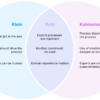More than one-third of the Corn Belt in the Midwest—nearly 100 million acres—has completely lost its carbon-rich topsoil, according to University of Massachusetts Amherst research that indicates the U.S. Department of Agricultural has significantly underestimated the true magnitude of farmland erosion.
In a paper published in the Proceedings of the National Academy of Sciences, researchers led by UMass Amherst graduate student Evan Thaler, along with professors Isaac Larsen and Qian Yu in the department of geosciences, developed a method using satellite imagery to map areas in agricultural fields in the Corn Belt of the Midwestern U.S. that have no remaining A-horizon soil. The A-horizon is the upper portion of the soil that is rich in organic matter, which is critical for plant growth because of its water and nutrient retention properties. The researchers then used high-resolution elevation data to extrapolate the satellite measurements across the Corn Belt and the true magnitude of erosion.
Productive agricultural soils are vital for producing food for a growing global population and for sustaining rural economies. However, degradation of soil quality by erosion reduces crop yields. Thaler and his colleagues estimate that erosion of the A-horizon has reduced corn and soybean yields by about 6%, leading to nearly $3 billion in annual economic losses for farmers across the Midwest.
The A-horizon has primarily been lost on hilltops and ridgelines, which indicates that tillage erosion—downslope movement of soil by repeated plowing—is a major driver of soil loss in the Midwest. Notably, tillage erosion is not included in national assessments of soil loss and the research highlights the urgent need to include tillage erosion in the soil erosion models that are used in the U.S. and to incentivize adoption of no-till farming methods.
Further, their research suggests erosion has removed nearly 1.5 petagrams of carbon from hillslopes. Restoration of organic carbon to the degraded soils by switching from intensive conventional agricultural practices to soil-regenerative practices, has potential to sequester carbon dioxide from the atmosphere while restoring soil productivity.
No-till practices in vulnerable areas significantly reduce soil erosion
More information:
Evan A. Thaler el al., “The extent of soil loss across the US Corn Belt,” PNAS (2021). www.pnas.org/cgi/doi/10.1073/pnas.1922375118
Provided by
University of Massachusetts Amherst
Citation:
Corn belt farmland has lost a third of its carbon-rich soil (2021, February 15)
retrieved 15 February 2021
from https://phys.org/news/2021-02-corn-belt-farmland-lost-carbon-rich.html
This document is subject to copyright. Apart from any fair dealing for the purpose of private study or research, no
part may be reproduced without the written permission. The content is provided for information purposes only.



